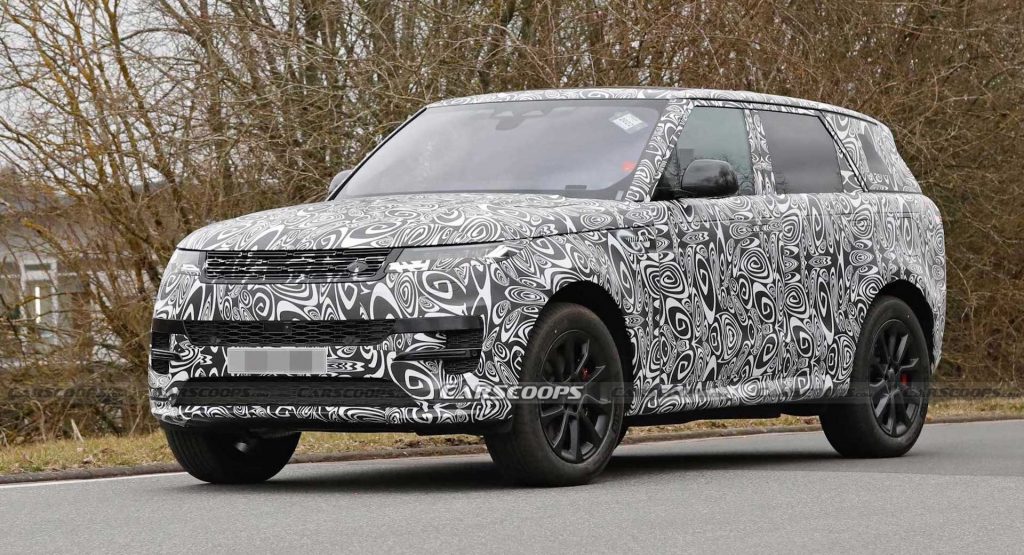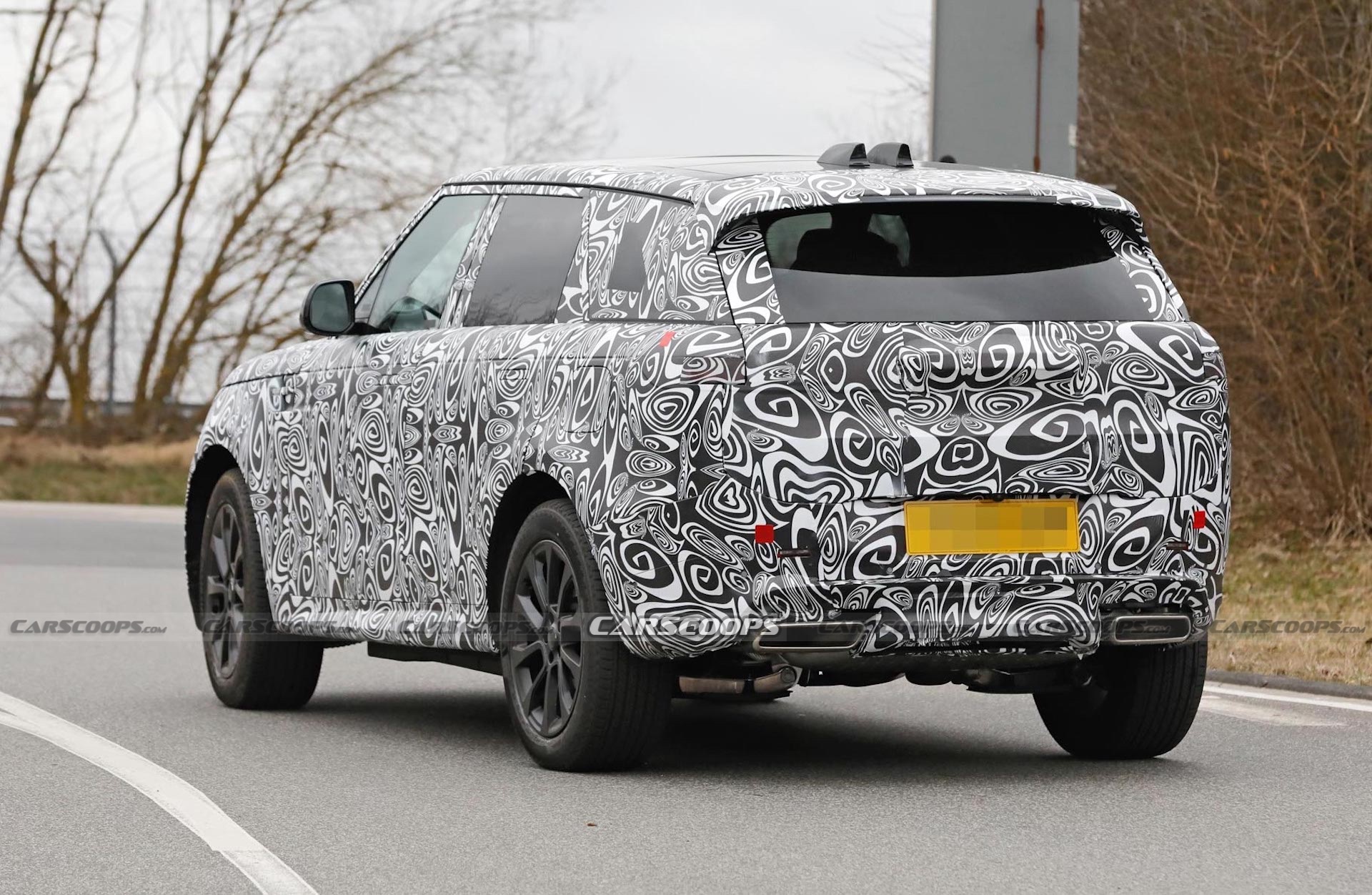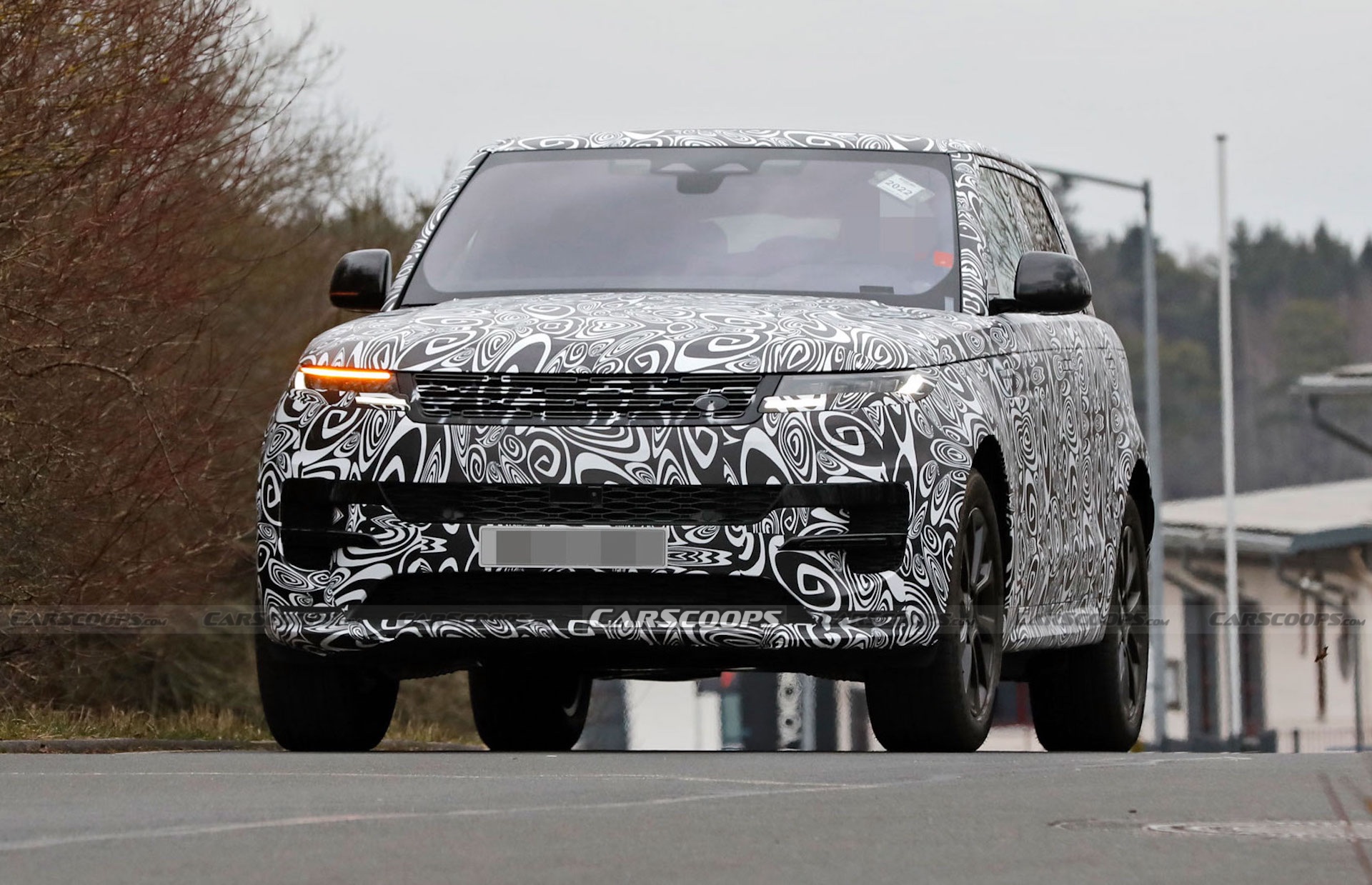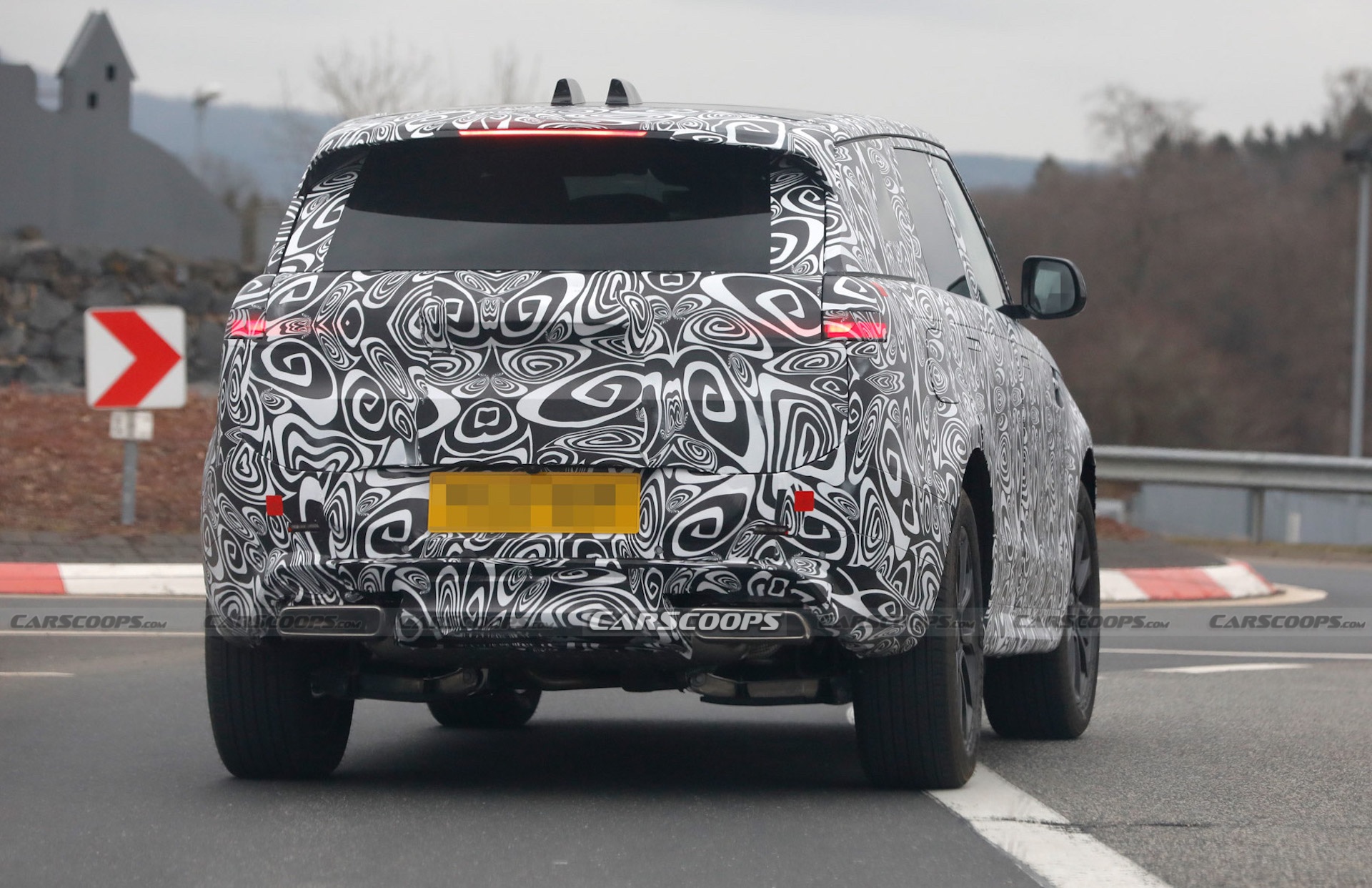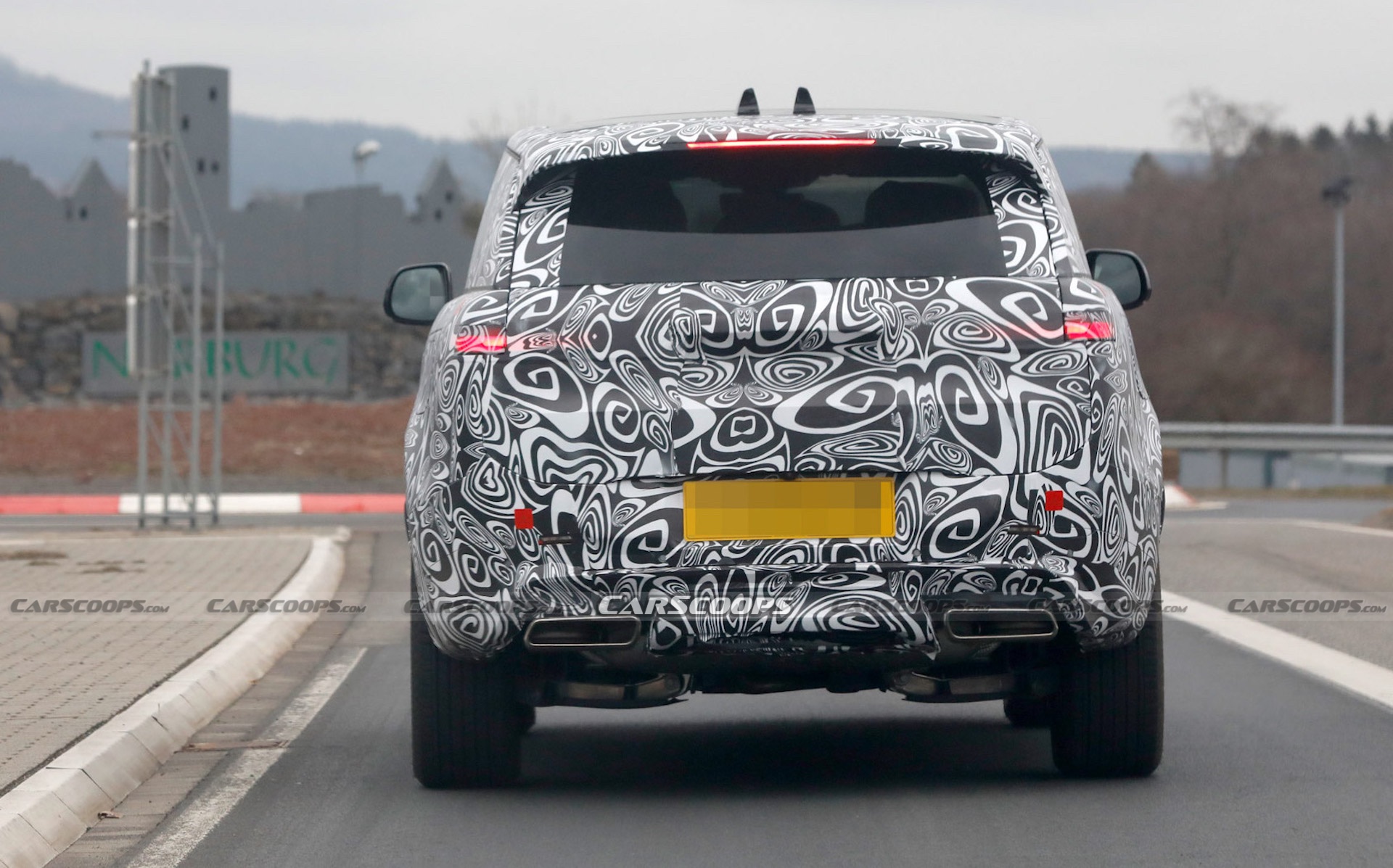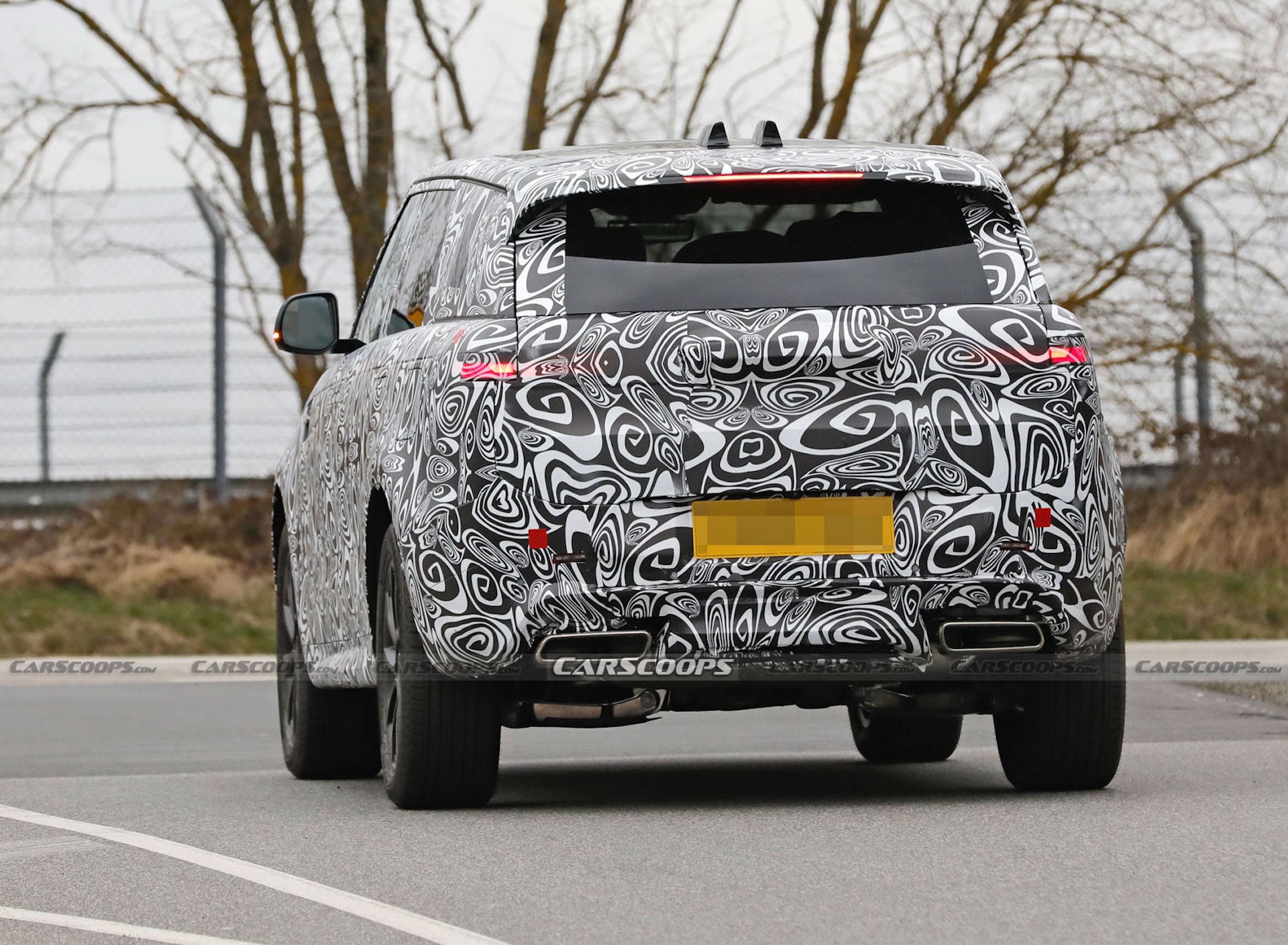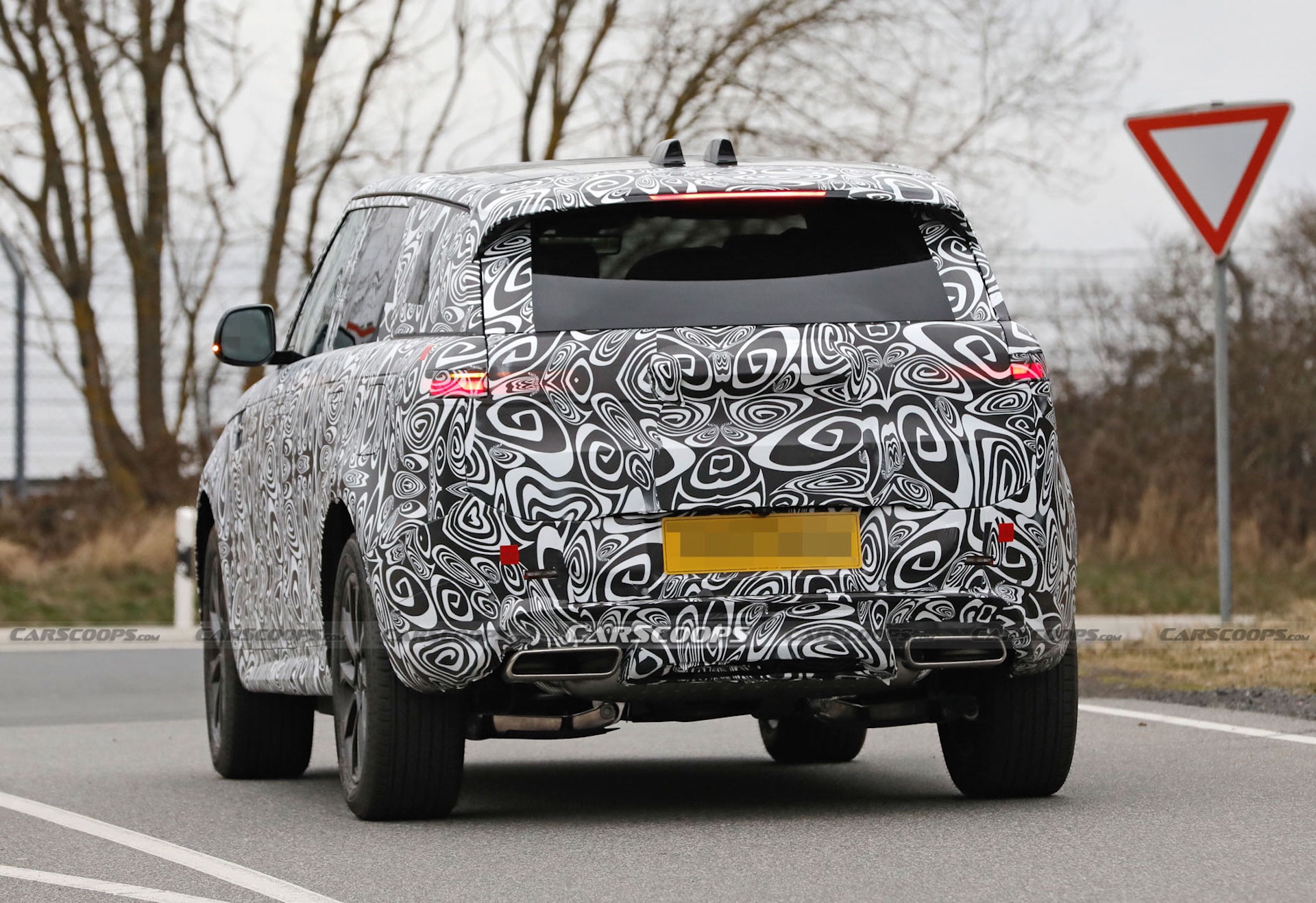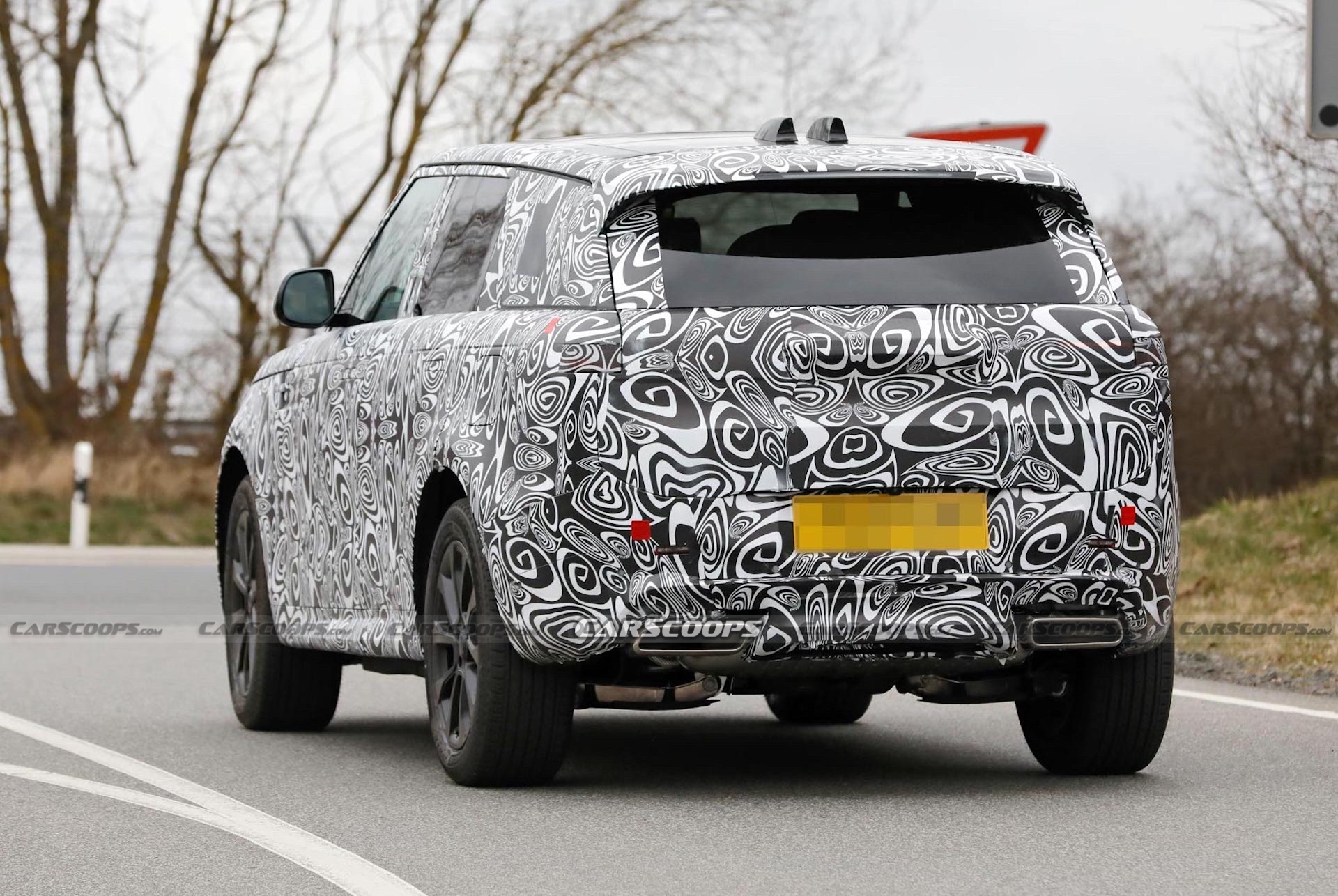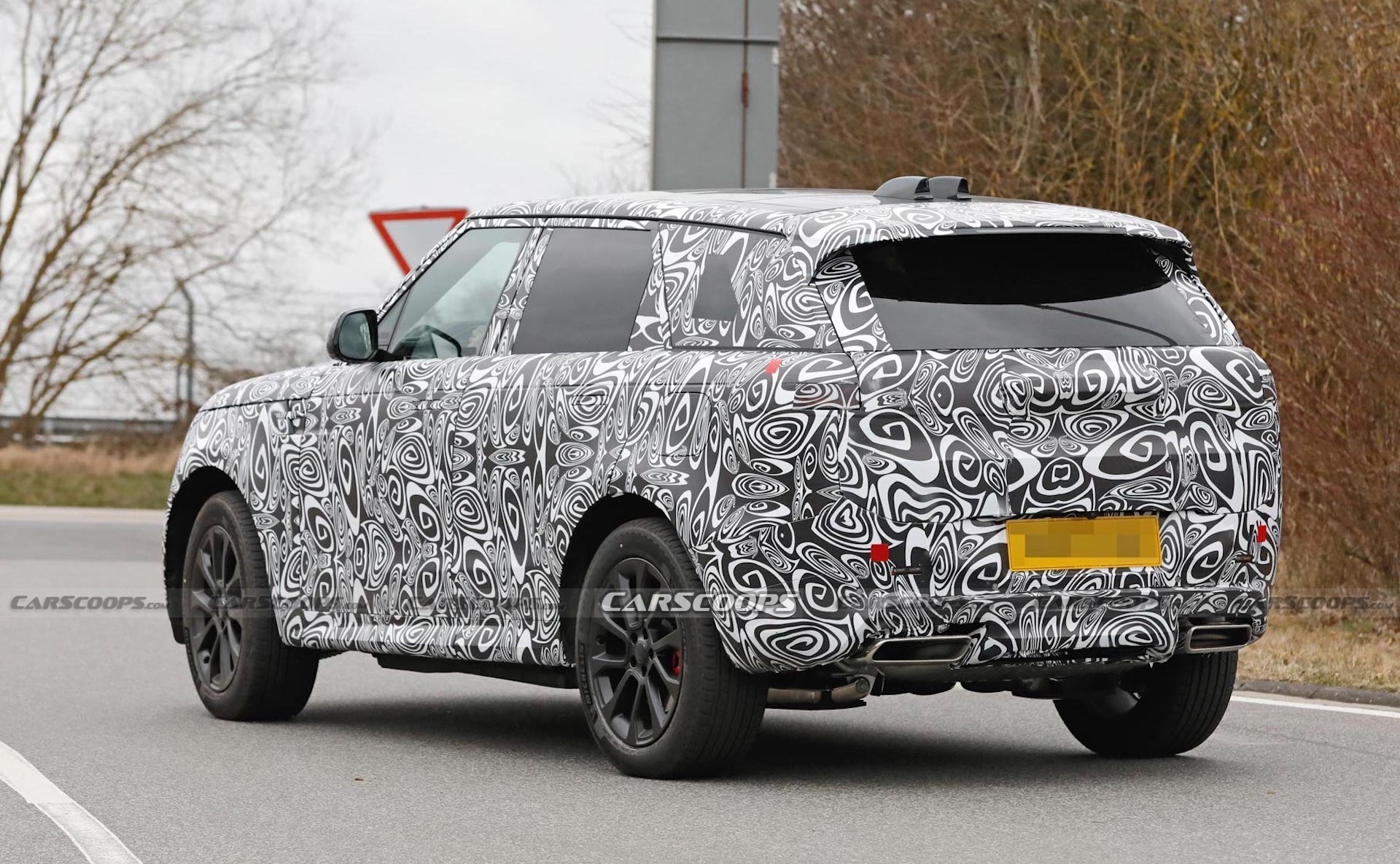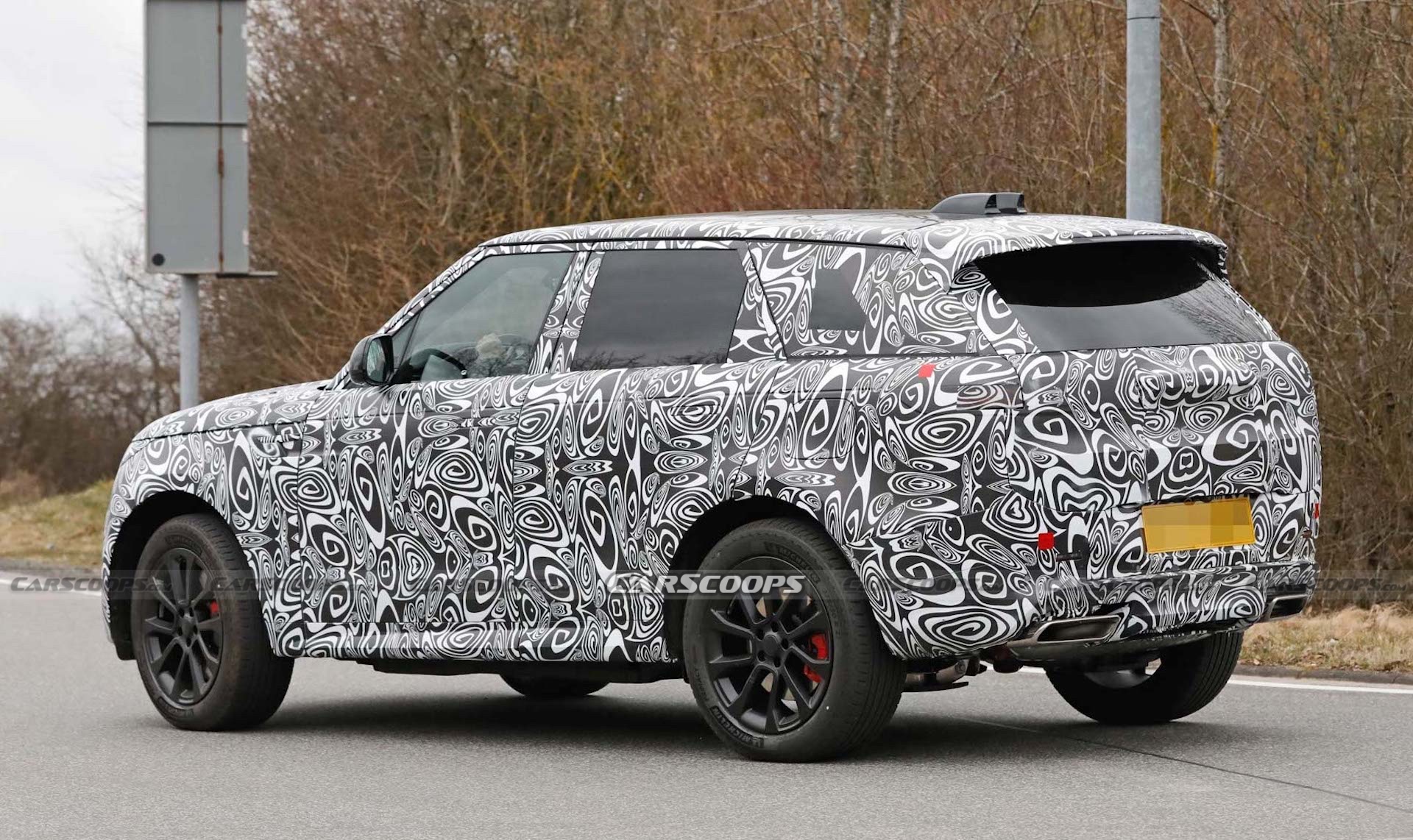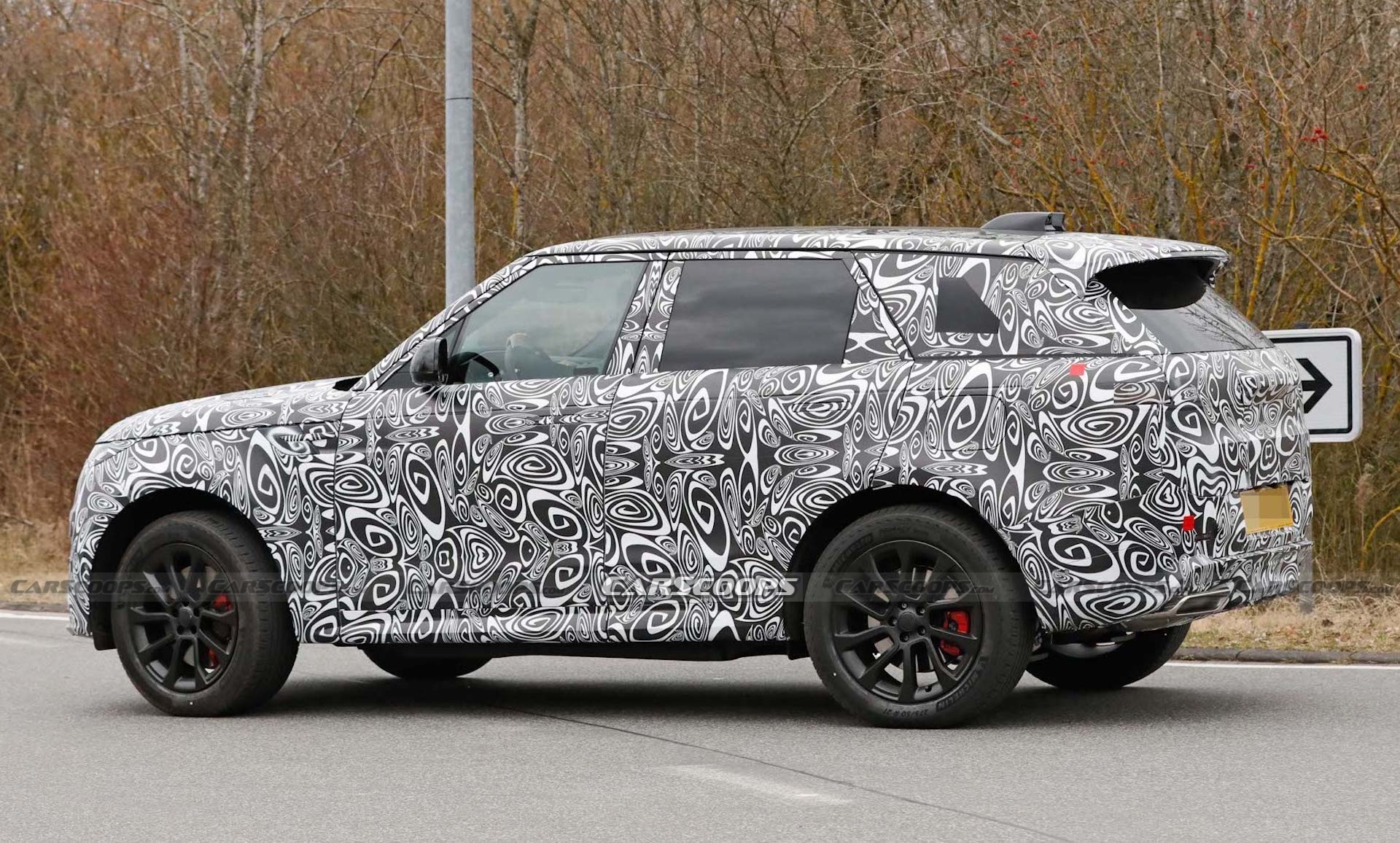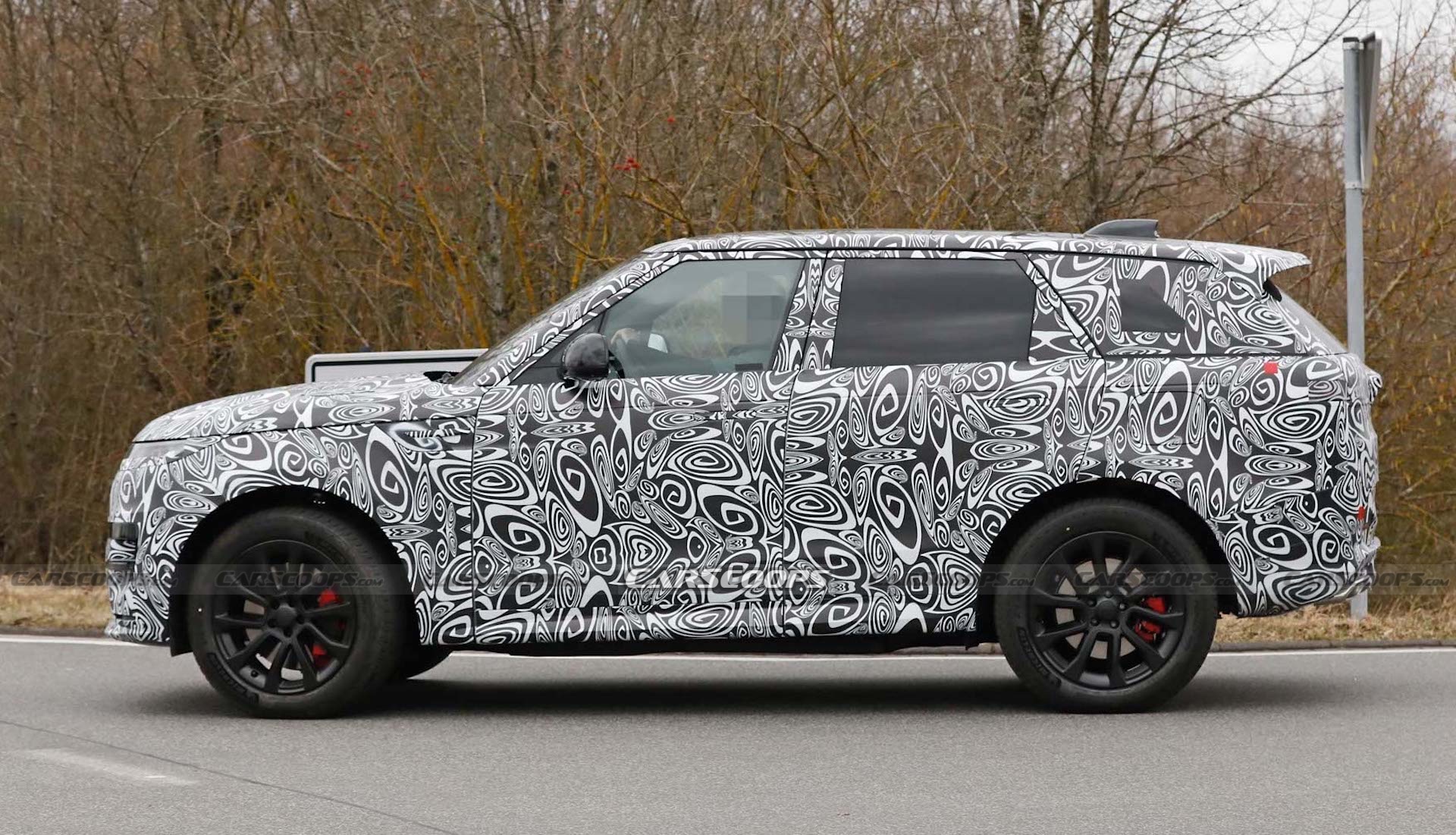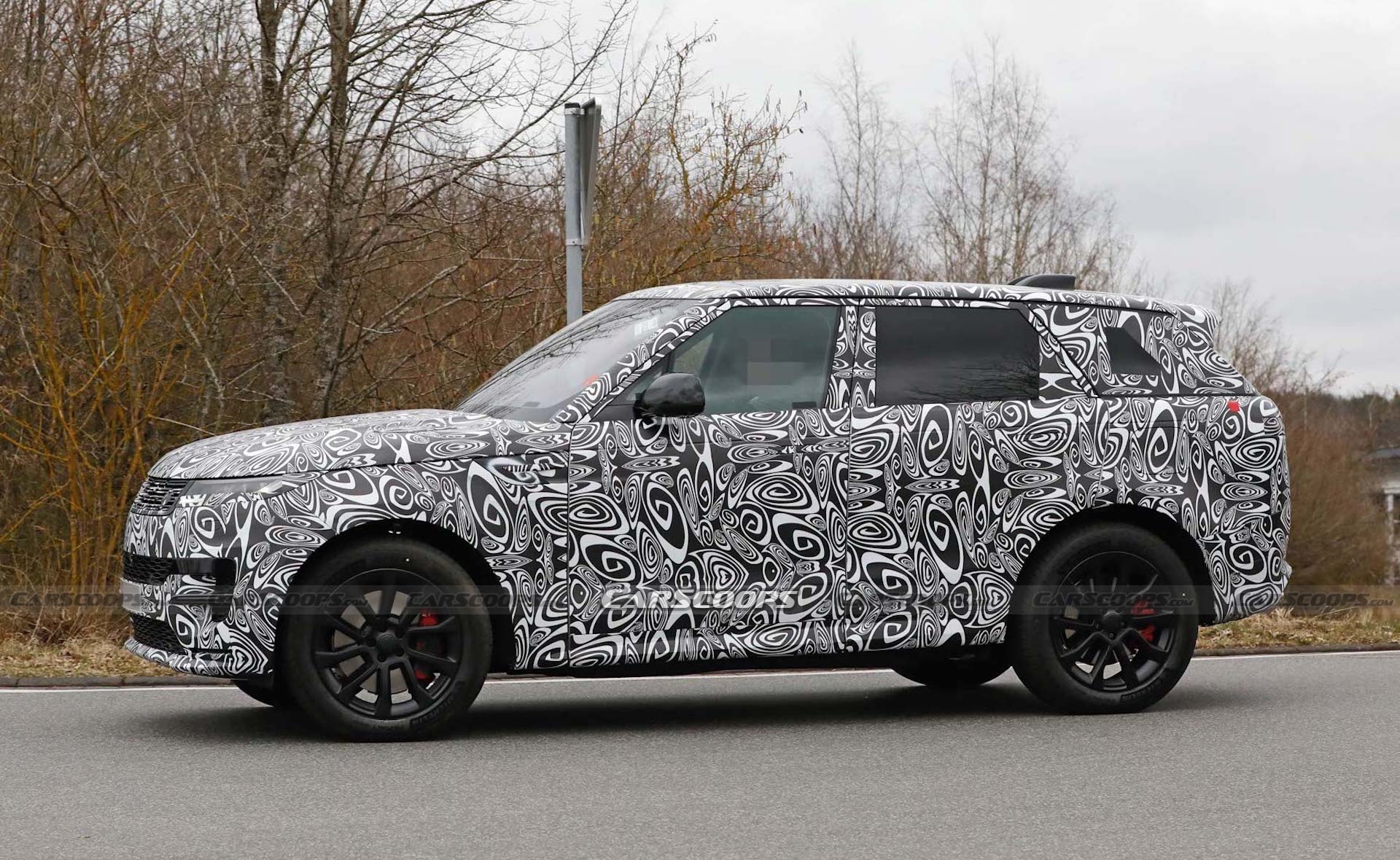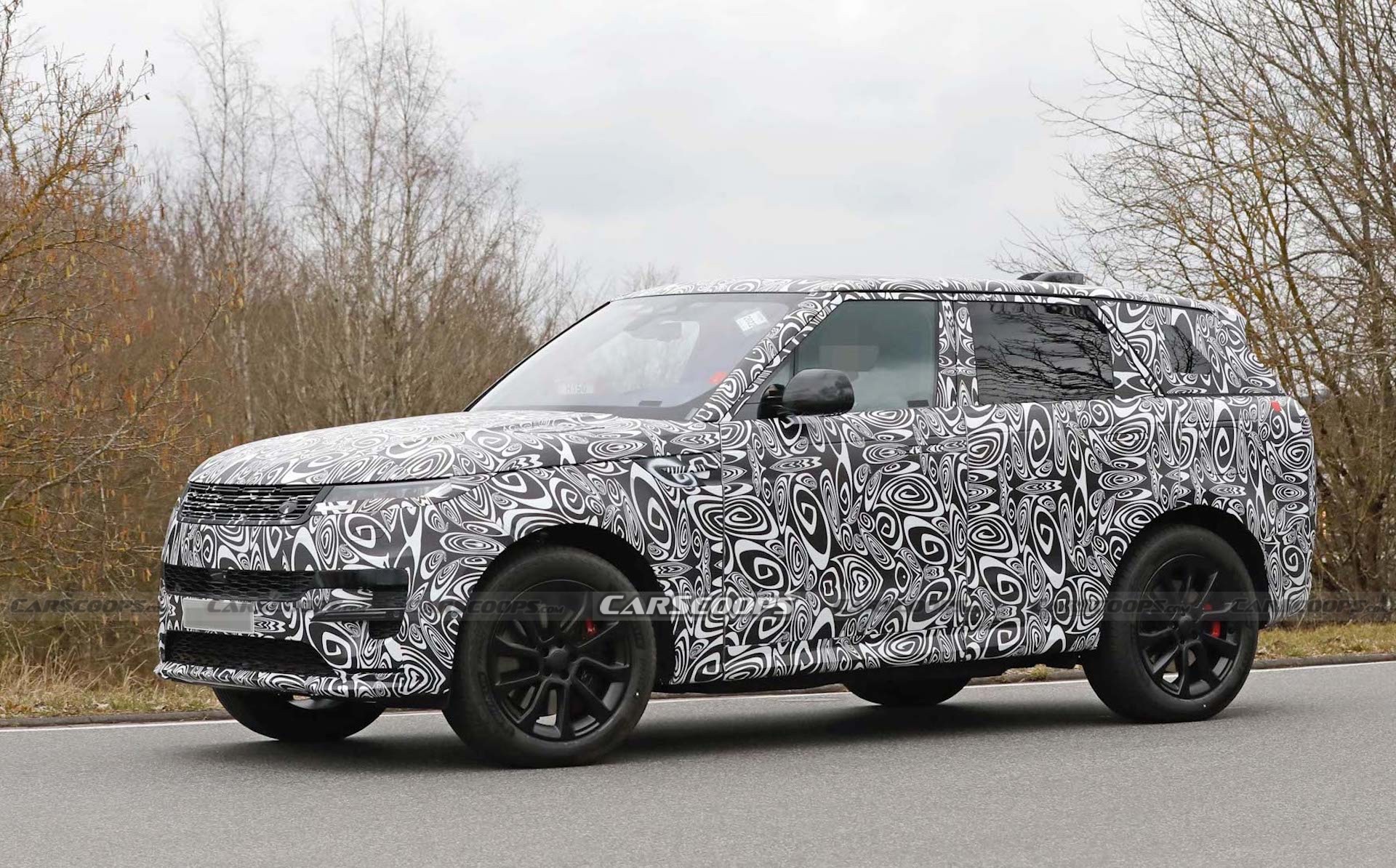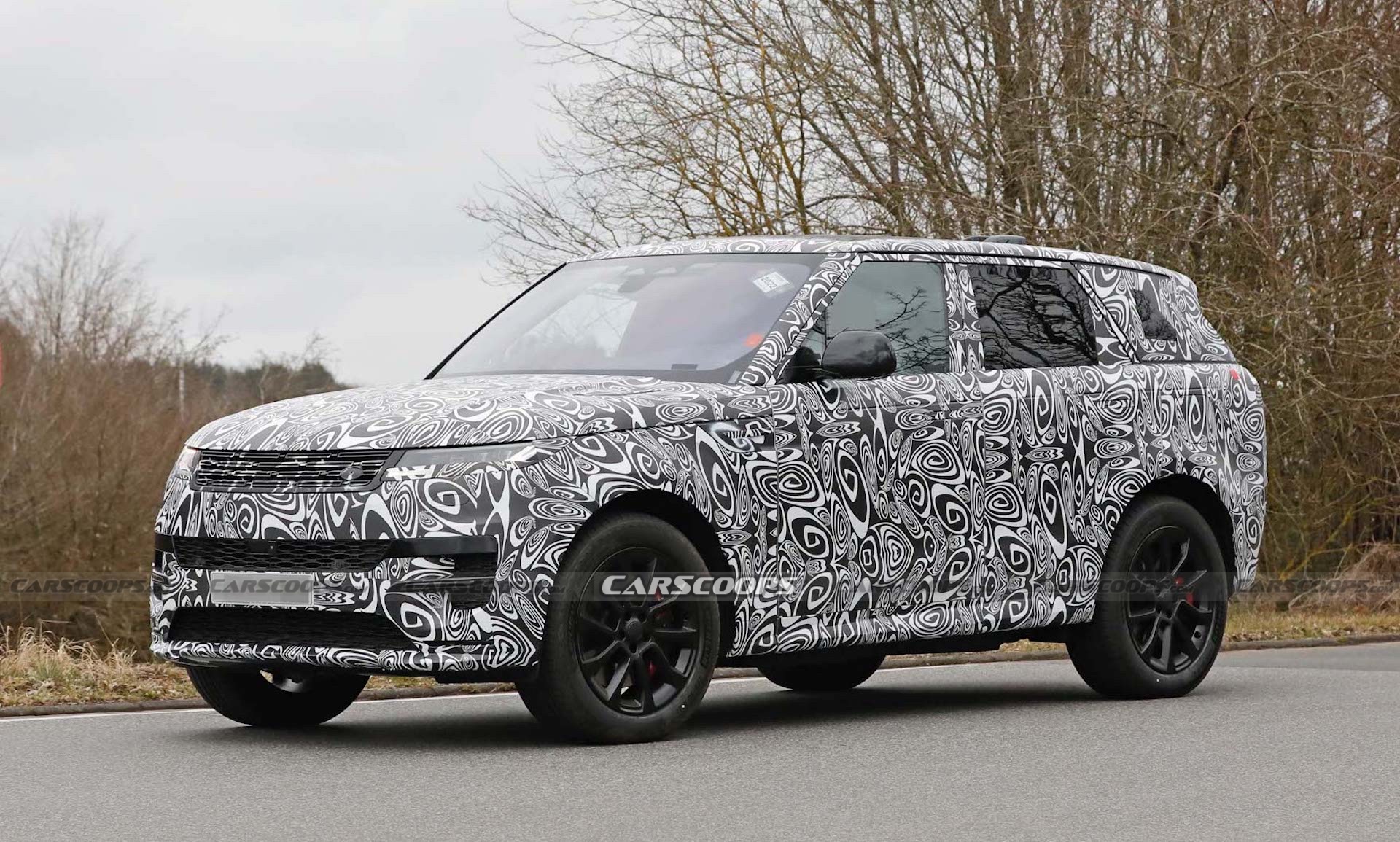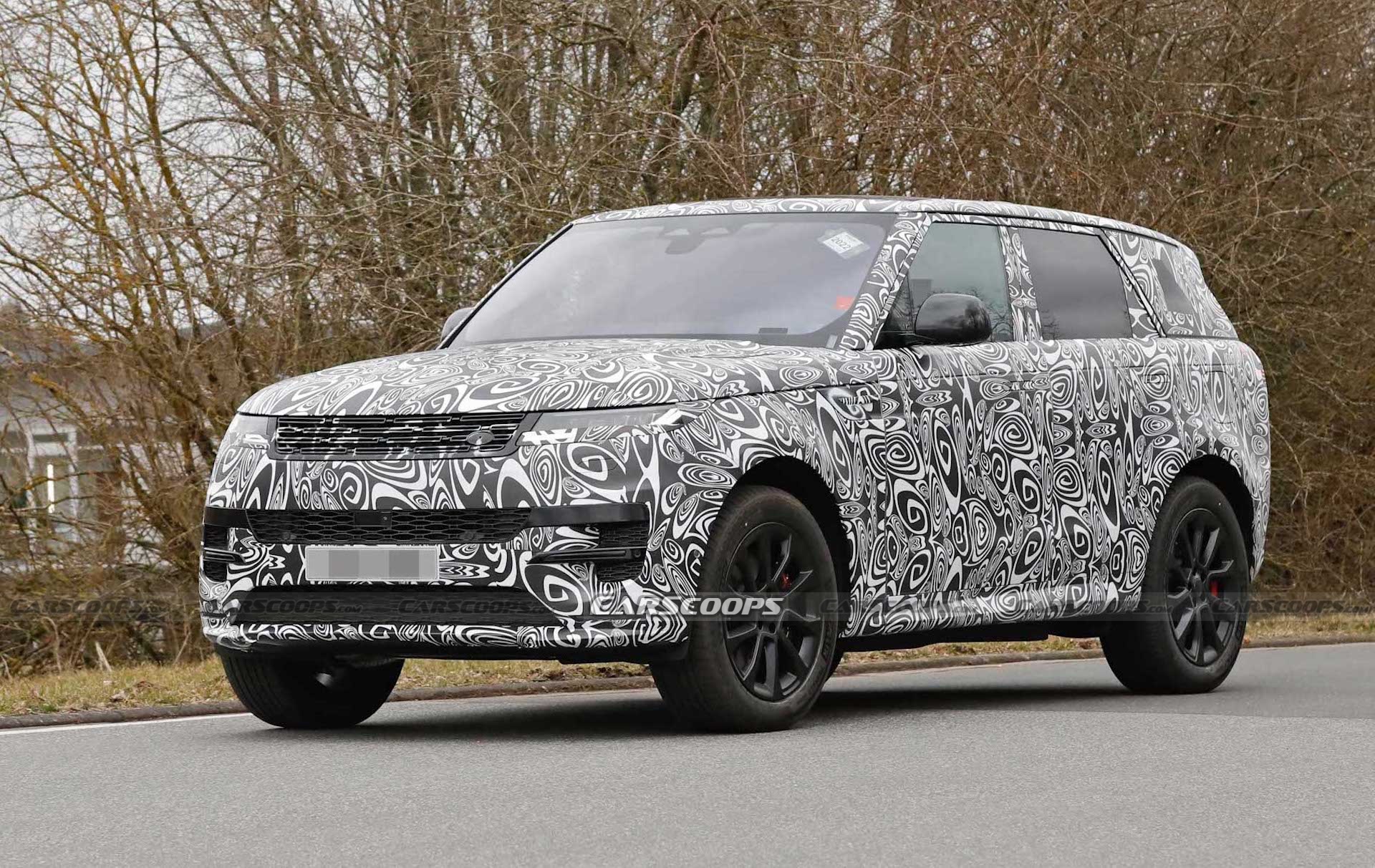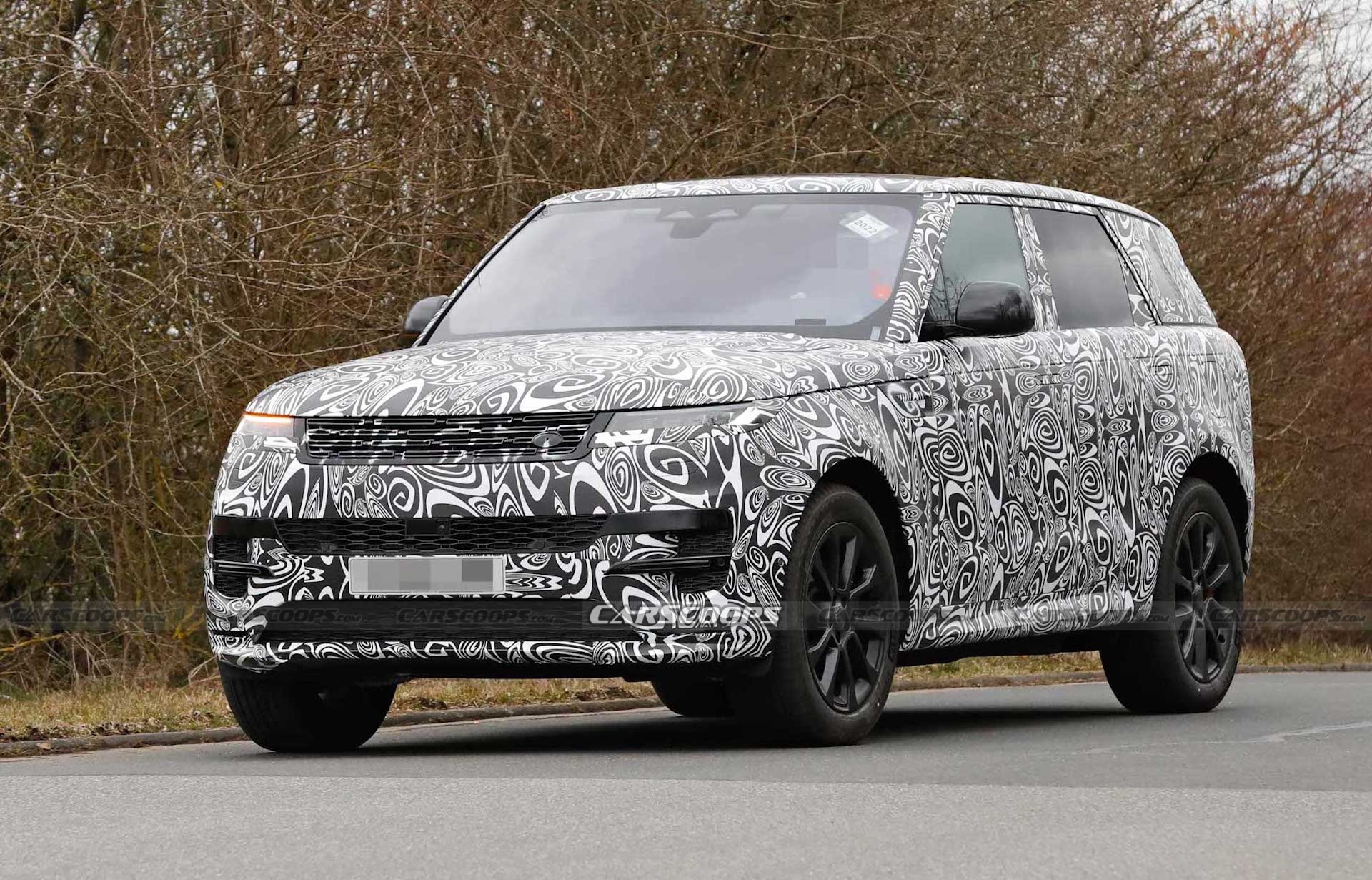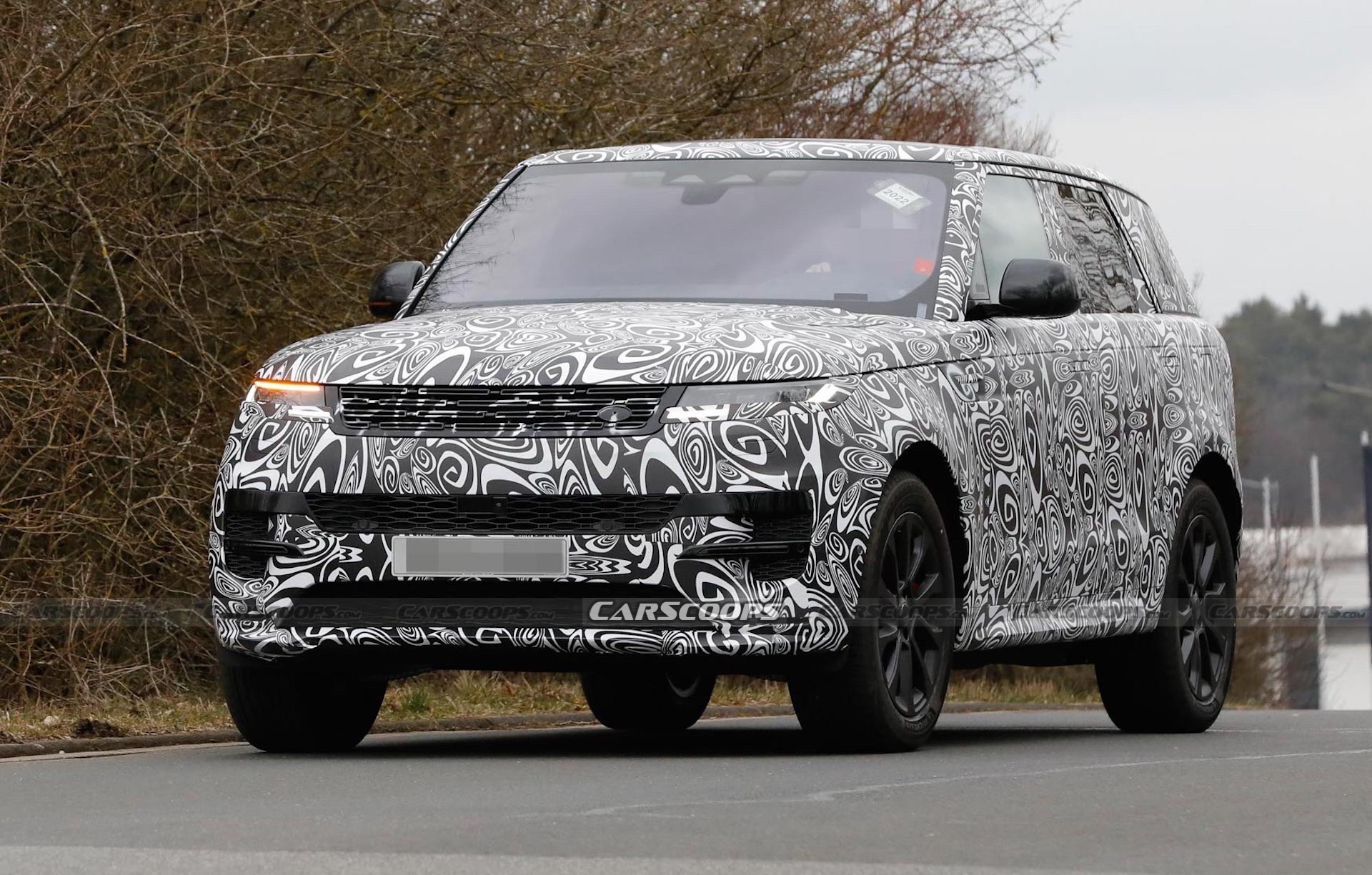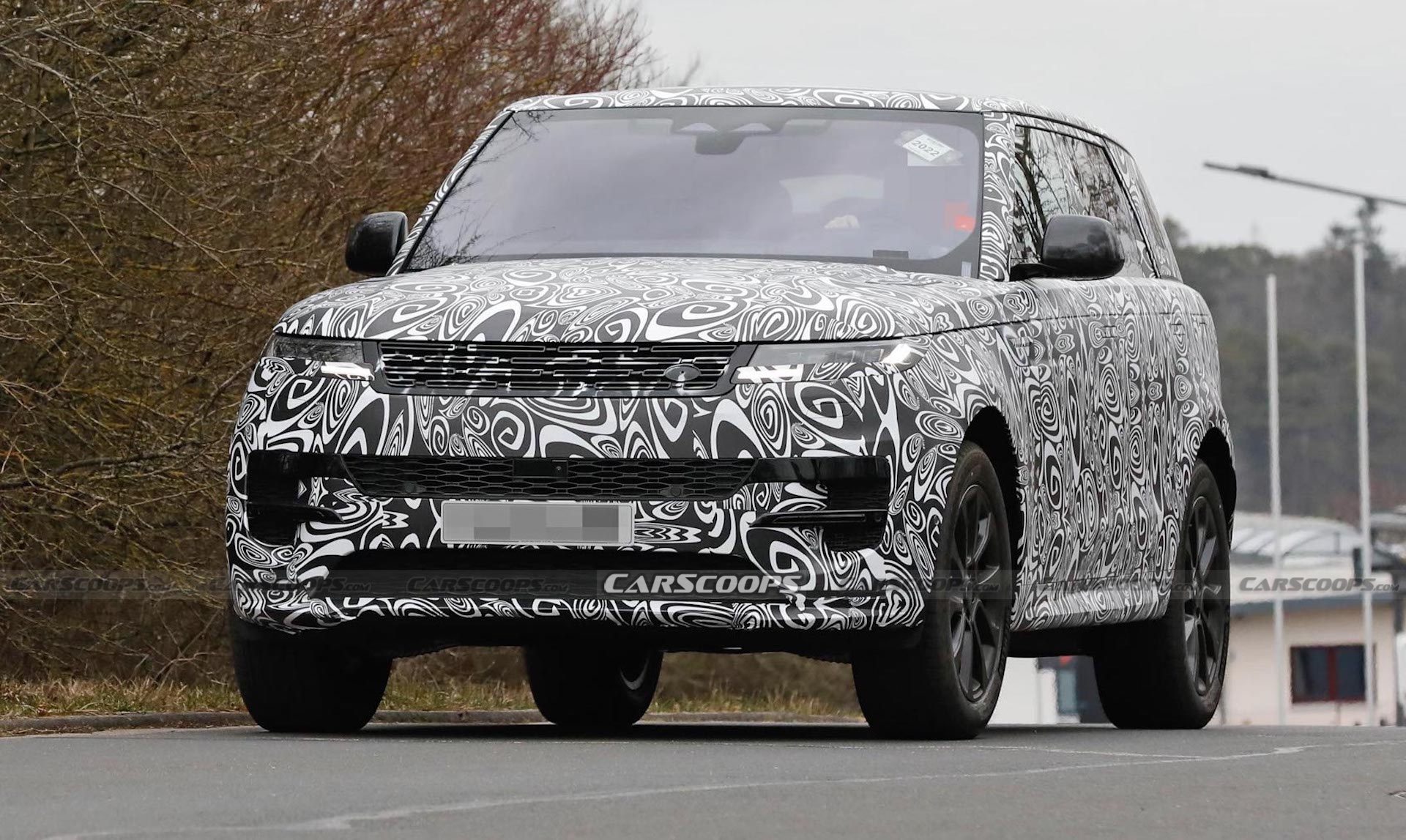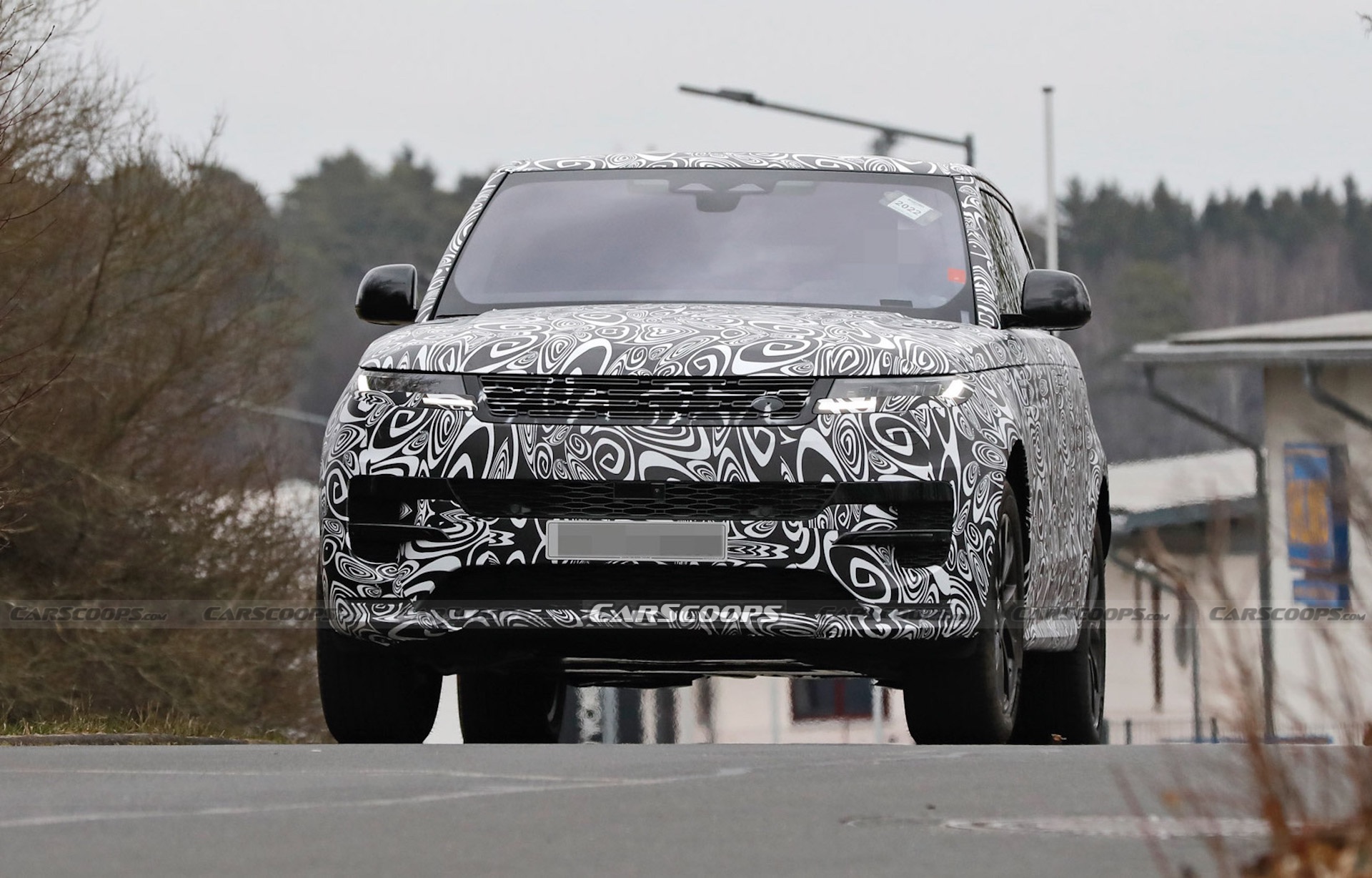The 2023 Range Rover Sport has Porsche’s Cayenne in its crosshairs and our spy photographers have caught it training for battle near Porsche’s second home, Germany’s Nürburgring circuit.
Unlike earlier spy shots, this latest batch shows the third-generation Range Sport in broad daylight, meaning we get our clearest idea yet of how the final car will look. Dual filler flaps indicate that this is a PHEV variant that could be capable of up to 70 miles (113 km) of electric driving.
Though every panel is covered in obligatory camo swirls, the shape of the bumpers, lights, grille, and lower vents are all identifiable. Compared with its new 2022 Range Rover brother, which was revealed last fall, and will hit showrooms later this year, the Sport appears to have slimmer LED headlights and a shallower grille, while the lower grille shape is less straight and punctuated by small aero blades, underlining its role as the most dynamic member of the Land Rover/Range Rover family.
The view at the rear isn’t so clear, thanks to an extra helping of disguise. But it looks like the Sport will get horizontal corner light units rather than the 1970s porn star ’tache style of lamps seen on the latest Range Rover that extend across the trunk lid and drop down the sides of the rear hatch. The profile images show that the Sport adopts the same recessed door handle style seen on cars like the Evoque and Range Rover, but not featured on the more utilitarian Defender and Discovery.
Related: 2022 Range Rover Lands With BMW V8 And Noise-Cancelling Headrests, PHEV And EV Coming 2023
These images don’t give us a look inside the cabin but we’re expecting to see a focus on minimalist design but with plenty of high-quality materials, closely following a template laid down by the 2022 Range Rover. The Sport could also be equipped with its big brother’s 13.7-inch digital instrument cluster and a 13.1-inch Pivi Pro infotainment system.
Engine options are also likely to mirror those in the full-size Range Rover, so bank on being offered a choice of six-cylinder and BMW-sourced 4.4-liter V8 combustion engines delivering up to 523 hp (530 PS) and 553 lb-ft (749 Nm) of torque, with a 617 hp (625 PS) SVR crowning the lineup.
Certain markets may also get diesel options, but the new PHEVs are likely to be far more popular given what we know about the new 2022 Range Rover plug-ins. Offered in two trims, the 434 hp (440 PS/324 kW) P440e and the 503 hp (510 PS/375 kW) P510e, the Range Rover PHEVs combine a 38kWh lithium-ion battery with a 105kW electric motor and a 3.0-liter inline-six-cylinder engine. The more powerful model can get from 0-60 mph (0-96 km/h) in just 5.3 seconds and achieve an impressive 70 miles (113 km) of electric driving.




